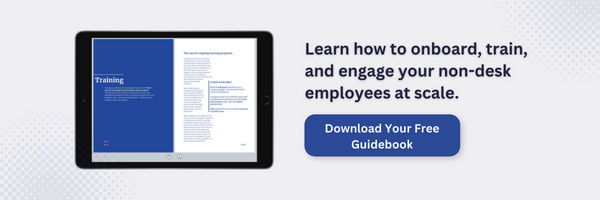How to Measure Employee Engagement with Konverse
What is employee engagement?
According to SHRM, employee engagement refers to the level of commitment and connection an employee feels to their organization. High employee engagement is often associated with higher productivity levels, higher retention rates, and improved loyalty. Research also shows that employee engagement is linked to customer satisfaction, brand reputation, and stakeholder value.
Why is employee engagement important for deskless staff?
Many industries with deskless staff – like retail and food service – have notoriously high turnover rates. Because deskless staff are not working in traditional office settings and are not communicating with senior leadership regularly, it can be more difficult to connect with the brand. However, in many instances, these workers are – quite literally – the face of the brand. They interact with customers on a day-to-day and directly shape the customer experience.
How do I measure employee engagement?
The most common way organizations measure employee engagement is through surveys. eNPS surveys provide a snapshot of employee sentiment but do not always give a contextualized picture of how employees work or how they feel. By integrating hard data from your communication and task management tools, you can develop a more robust measurement strategy that paints a clearer picture of productivity, commitment, and overall engagement among your staff.
Measuring content engagement
If you use a tool like Konverse to post company announcements, consider these content engagement data points:
- View Rate: The percentage of employees that have opened and viewed a post
- Number of Likes: The amount of "likes" on a post
- Comments per Post: The number of comments made on a post
- Click Rate: The percentage of users that viewed the post and clicked a link in the post
Measuring productivity
Tools like Konverse can also be used for task management. Measure how often tasks are being marked “complete” and how long they take to be completed to learn more about productivity rates at your organization.
- Completion Rate: The percentage of assigned tasks that have been completed
- Time to Complete: The total amount of time it takes a task to be marked "complete"
Measuring event success
Many organizations have internal event programing to keep employees engaged. Think: training sessions, webinars, and roundtables. Track the success of these events over time to see what type of content your employees are most interested in.
- Attendance Rate: The percentage of invitees that attended the event
- RSVP Response Breakdown: A breakdown of RSVP responses (yes, no, no response)
Measuring tech adoption
When implementing new technology, it’s important to understand how your employees are using the platform. High adoption rates signify your employees are willing to learn new technology and that your tech investment paid off. Measure adoption with these data points:
- Login Rate: The percentage of your employees regularly logged in to your application
- Active User Rate: The number of employees regularly using application features
- Number of Posts: The number of posts published by employees
- Engagement per user: The amount a staff member is using the application


.gif)
.png)
